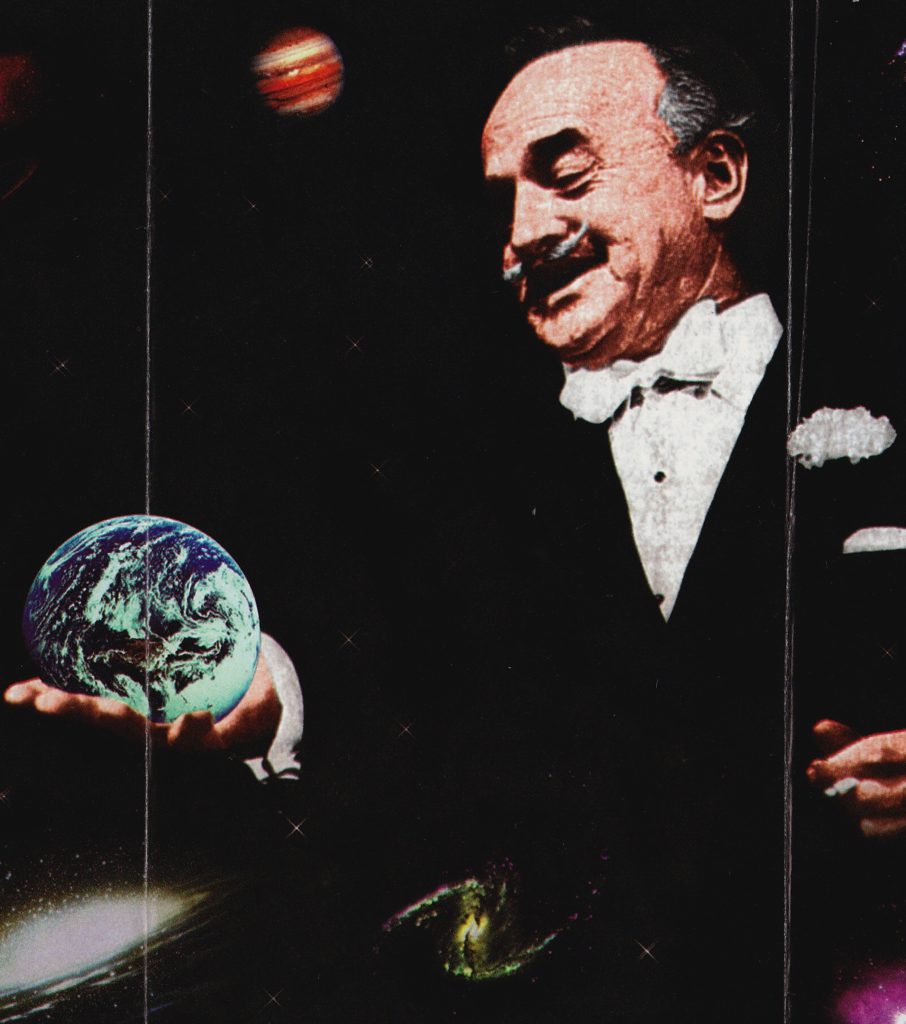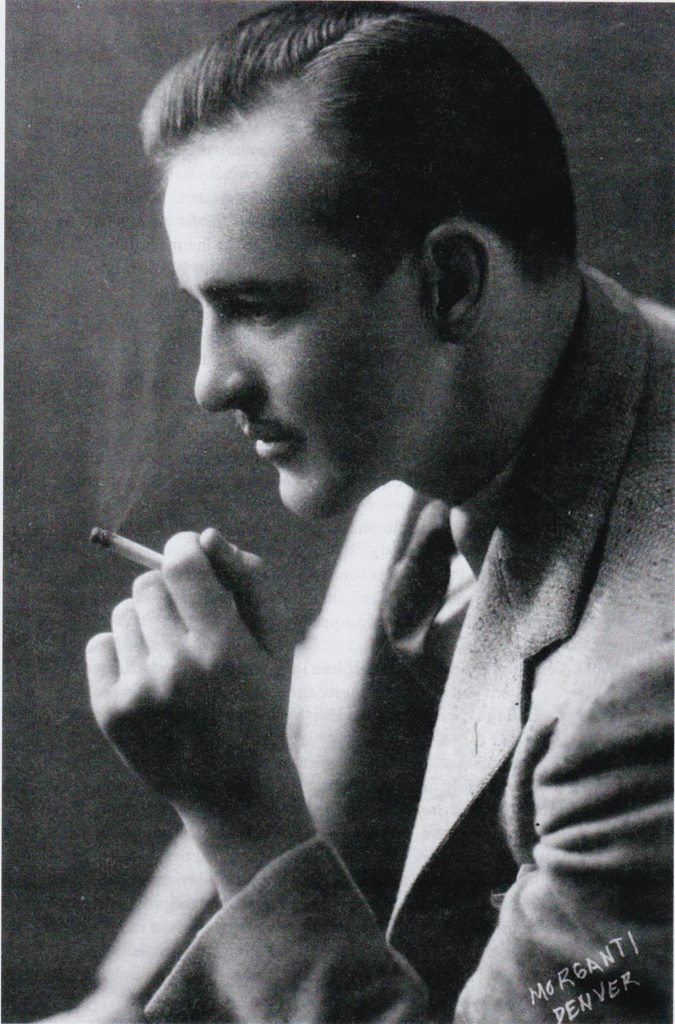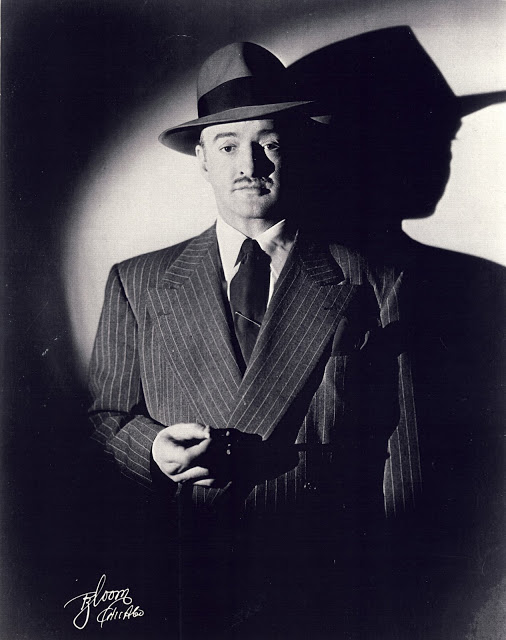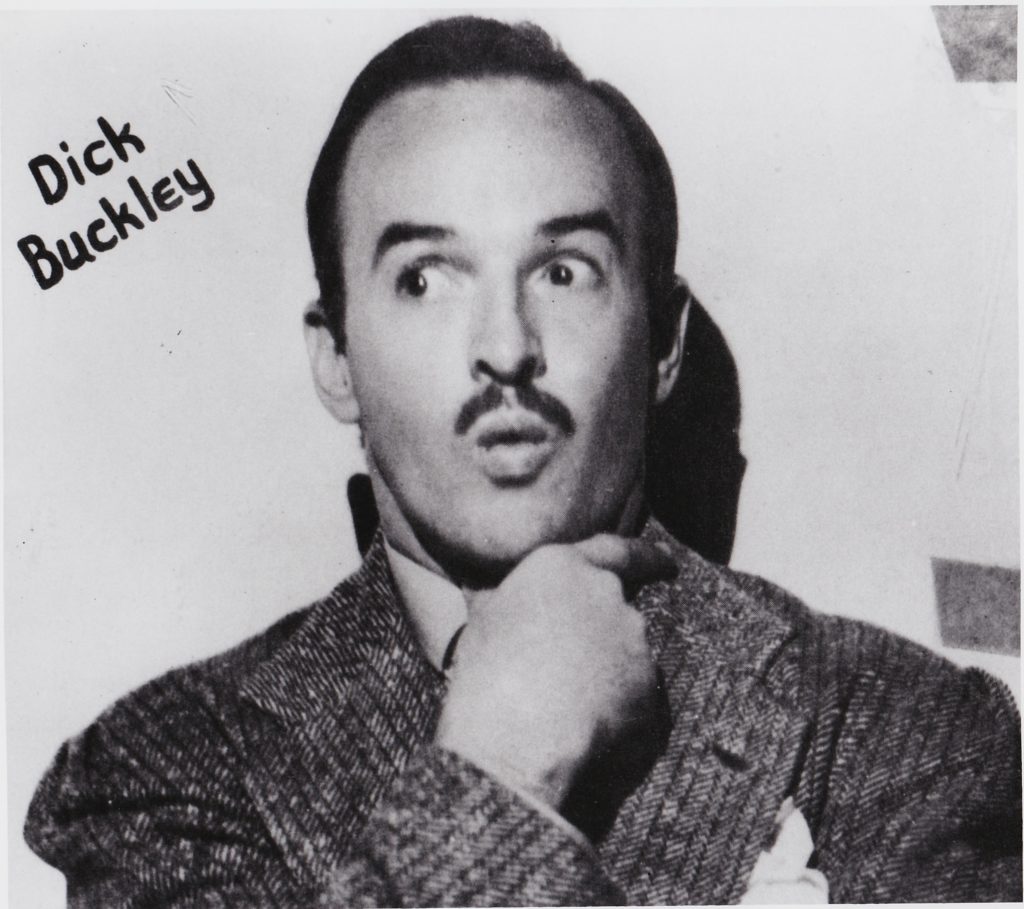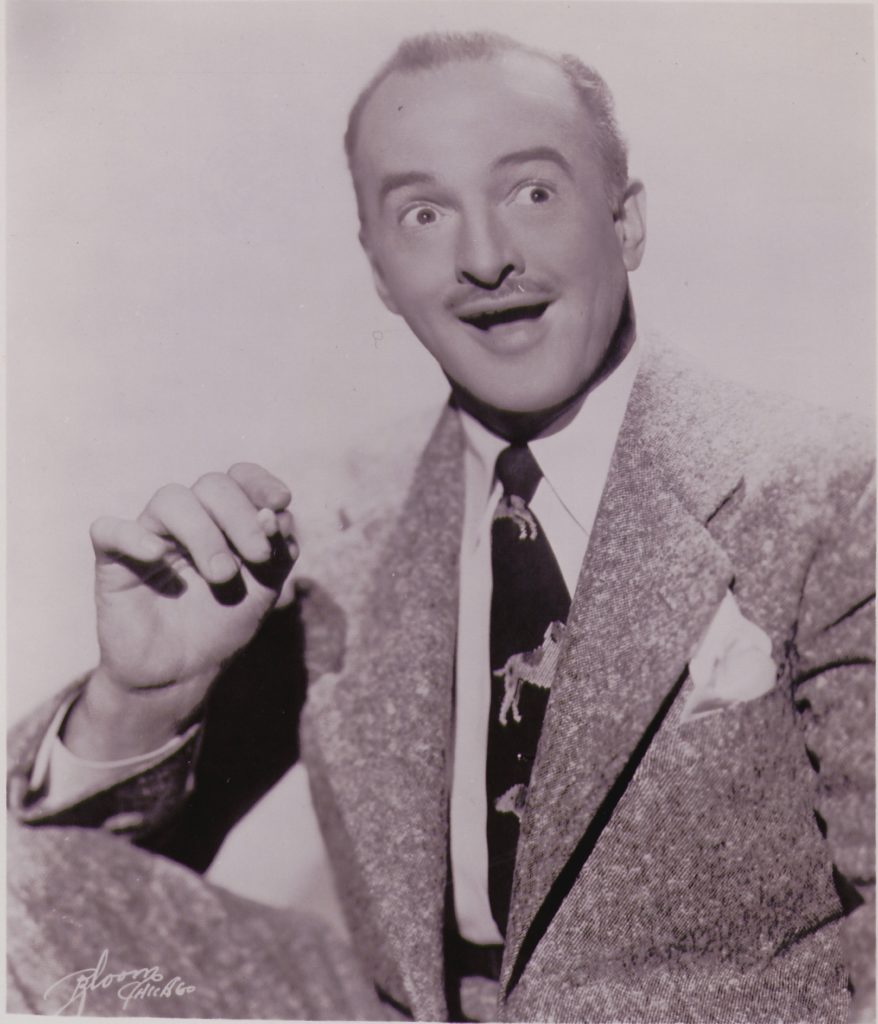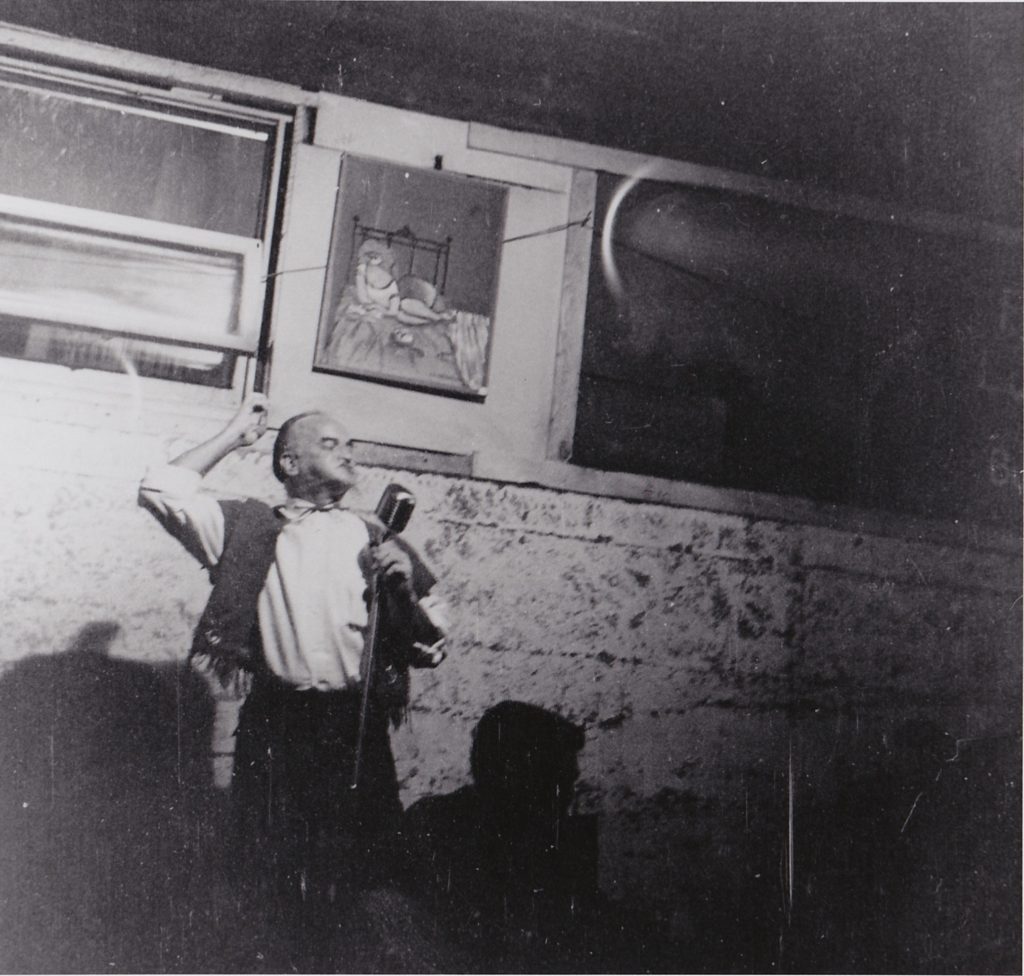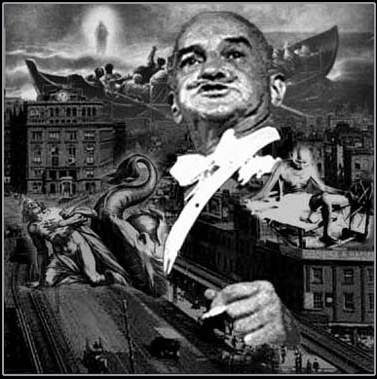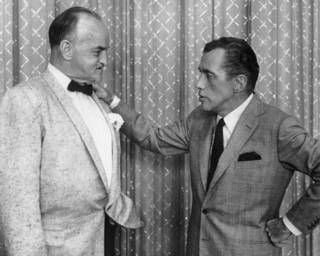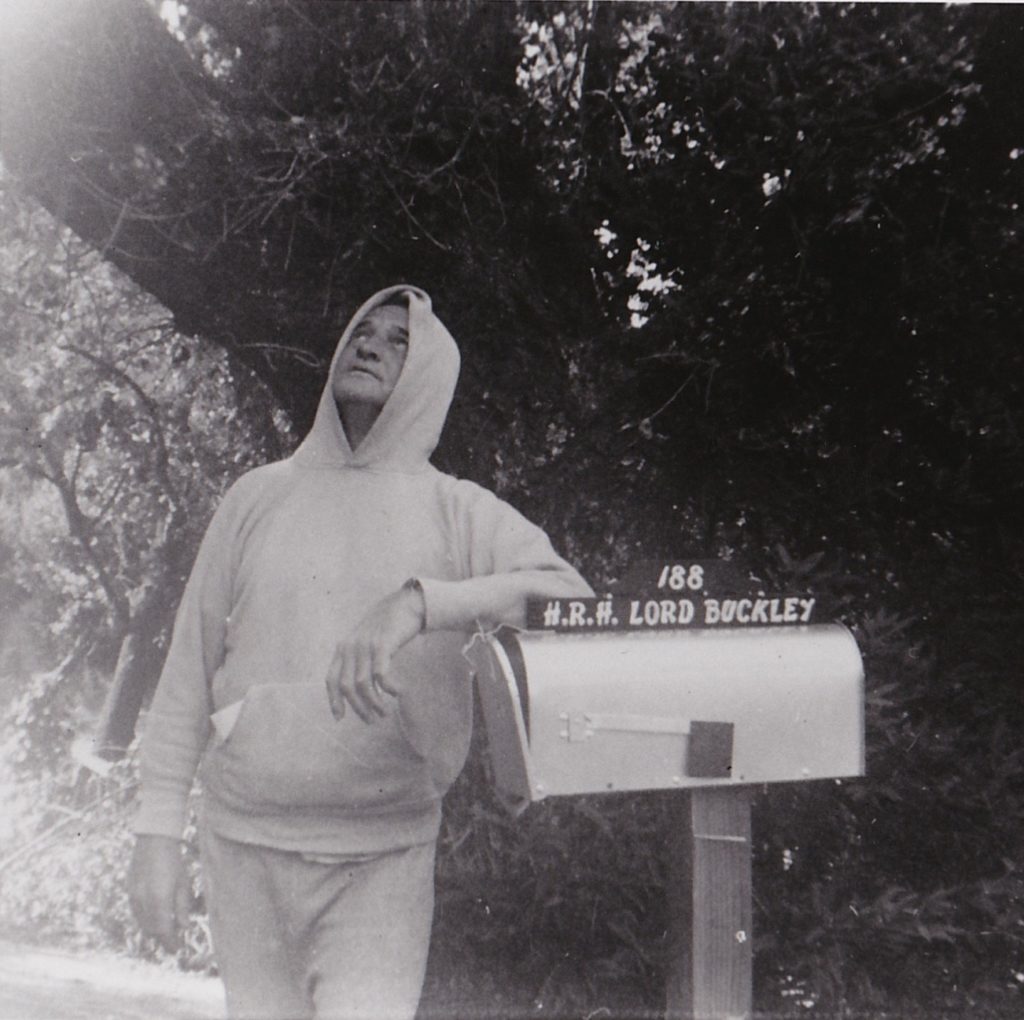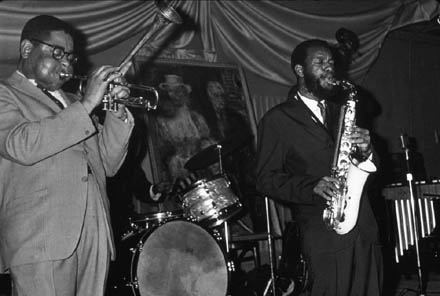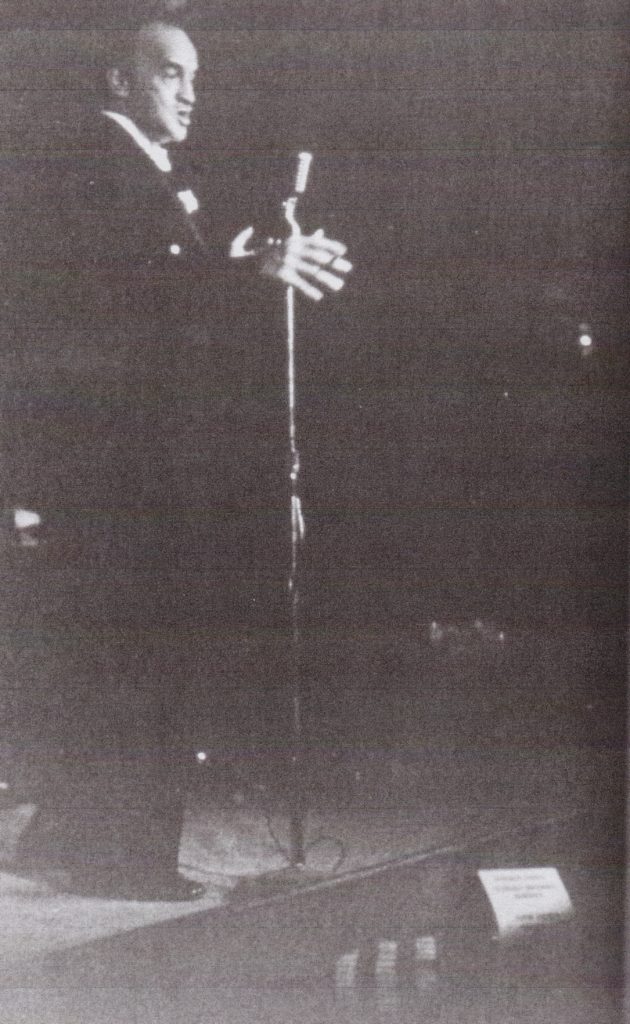Stompin’ The Sweet, Swingin’ Sphere
“Laughter is truly religious. It gives off vibrations from the subconscious. It swings its sounds from the subconscious. When a person is laughing he’s illuminated the full beauty of a human being…you’re thinking love, you’re vibrating love. It’s prayer. It’s a beautiful thing.” –LORD BUCKLEY, 1959
A six-and-a-half-foot-tall ex-lumberjack invoking both the language and manners of English aristocracy and the streets of black America? A hemp-headed hipster working the dance marathons, walkathons and tent shows of the Depression? A picaresque pill-popping darling of Al Capone? A stand-up comic championing the causes of Jesus Christ and the Marquis de Sade in the course of a single gig? A jazz philosopher jamming with Charlie Parker? A gallivanting guru appearing in a Marilyn Monroe flick? A scotch-swigging shaman swinging light years ahead of the Summer of Love? A teller of tall tales streaking a Frank Sinatra performance, starting his own bebop church and throwing a two-year party? Who is this forgotten figure and why are several hundred acolytes celebrating his life and work more than three decades after his mysterious and controversial death?
Though the likes of Lenny Bruce, Bob Dylan, Bill Cosby, Richard Pryor and Robin Williams acknowledged their debt to him, Lord Buckley remains a cipher in the American psyche.
To an outsider the Fourth Annual Lord Buckley Memorial Celebration would appear to be something of a cross between a meeting of the James Joyce Society and a Grateful Dead concert. Yet Lord Buckley’s legacy was very much alive and jumpin’ one warm weekend last September in the hills above Santa Barbara, California, not far from the Reagan Ranch. A wild gumbo of gonzo revelers decked out in tie-dyes and pith helmets (Buckley’s headgear of choice) remembered His Lordship with a bas he would have appreciated.
Punctuating the event was a smorgasbord of musical entertainment. Lord Buckley imitators brought back to life many of his timeless classics. The playing of some of the master humorist’s recordings and the appearance of the Royal Family (Buckley’s survivors and descendants) provided the uninitiated with a warm Buckley primer.
Originally conceived as a way to bring the progressive elements of the area together in a forum of dialogue and good times, the celebration’s founders decided to focus the event around Lord Buckley’s love, warmth and humor. What money the not-for-profit event garners is earmarked for environmental and humanitarian groups like Greenpeace and Amnesty International.
The organizers of this unusual not-for-profit gathering hoped that even those few uninformed seekers who ventured to the dusty site would discover what Buckley cognoscenti have known for a long time: Before Cool (B.C.) there was Lord Buckley, the original viper, the Hall of Fame Hipster, the baddest beatnik, the first flower child, the premier rapper.
Though he was best known for his “hipsemantic” retellings of Bible stories, Shakespeare, poetry and history in the 1950s, Buckley’s career as an entertainer stretched back to his humble roots in Tuolumne, California, a tough mining town in the foothills of the Sierra Nevada.
Born on April 5, 1906, young Richard Myrle Buckley sang with his sister Nell, busking for small change from itinerant cowboys on the streets of his hometown. During his teens Buckley was a lumberjack and at some point in the mid-1920s, he set off to work in the Texas oil fields but never made it„the first of many missed gigs. Somewhere along the way he met up with a traveling musician, formed an act with him and entered show business.
By the 1930s Buckley found his way to Chicago. Along with Red Skelton, Dick Buckley became a notoriously successful and saucy walkathon Master of Ceremonies overseeing the grueling Depression-ear spectacles which often lasted for weeks at a time. Though times were hard for most, Buckley was bringing in greenbacks hand over fist and usually spending it even faster.
Soon after, while working in the mob-run speakeasies of Prohibition-era Chicago, Buckley caught the fancy of the gangland element and was eventually set up by Al Capone in his own posh nightspot, the Chez Buckley. Buckley took the act home with him as well, presiding over parties that lasted days and developing a lifestyle that might conservatively be described as libertine.
By the 1940s Buckley as touring the movie house vaudeville circuit and perfecting a four-way act that he used for the rest of his career. The bit, which he called his “Amos ‘n Andy,” involved four audience members being called on stage to soundlessly gesticulate while Buckley spontaneously supplied their voices using black vernacular. When World War II broke out he used the act to crack up the troops while touring with Ed Sullivan’s U.S.O. outfit. Sullivan liked the act so much that he had Buckley appear many times on his television show in the 1950s.
Berle Adams, Buckley’s manager in the late 1940s and a show biz mover and shaker for half a century, often tells a typical Lord Buckley story: “Dick was unpredictable even in those days. These were his big drinking and womanizing days. Many clubs wouldn’t bring him back, especially hotels. It was precarious to have him work(ing) the hotel or working the floor because you didn’t know what was going to happen next.”
Adams succeeded in booking Buckley into the Chase Hotel in St. Louis for a two week stint. The first week was a hit but Adams received an urgent phone call from the hotel manager in St. Louis the following week. “Get that mad man out of my hotel! He tried to set fire to the hotel!”
Adams called Dick to ask him what happened.
He said, “Well, after the show, a couple of babes followed me up to the room. I wanted to get rid of them because I had my eyes on somebody else and I couldn’t get them out of the room. So I lit a match and threw it in the wastebasket and hollered: ‘Fire!’ How was I supposed to know the drapes were going to catch on fire?”
After World War II Buckley landed in New York with a role in a Broadway production of The Passing Show. It was then that he met, fell in love with and married one of the show’s young dancers, Elizabeth Hanson, a talented and striking 20-year-old blonde. Re christening his sixth wife “Lady” and himself “Lord Buckley,” the comic’s scattershot life took on the trappings of what became know as the “Royal Court,” a mini-kingdom infused with Buckley’s own peculiar sense of protocol.
Moving into a flat on Manhattan’s Upper west Side the eccentric duo played host to an eclectic group of artists, jazz musicians, comics, dancers, socialites, bohemians and street urchins. All were met with an open-door policy.
The non-stop festivities wailed until 1950 when, despite a flourishing career in the Big Apple, Buckley pulled up the family’s stakes and headed West, deciding on Los Angeles because of it’s close proximity to Hollywood and the show-biz towns of Las Vegas and Reno. Steady gigs were also to be had in San Francisco, where the Beat Generation was rapidly germinating. Money was a growing concern for the Buckley’s because the couple had a two-year-old daughter, Laurie, and an infant son, Richard Jr.
Though the film career never did pan out (except for a bit part in We’re Not Married, the 20th Century Fox comedy starring Marilyn Monroe, Fred Allen and Ginger Rogers, and a walk-on in Stanley Kubrick’s Spartacus), California proved to be the perfect locale for the free-spirited performer.
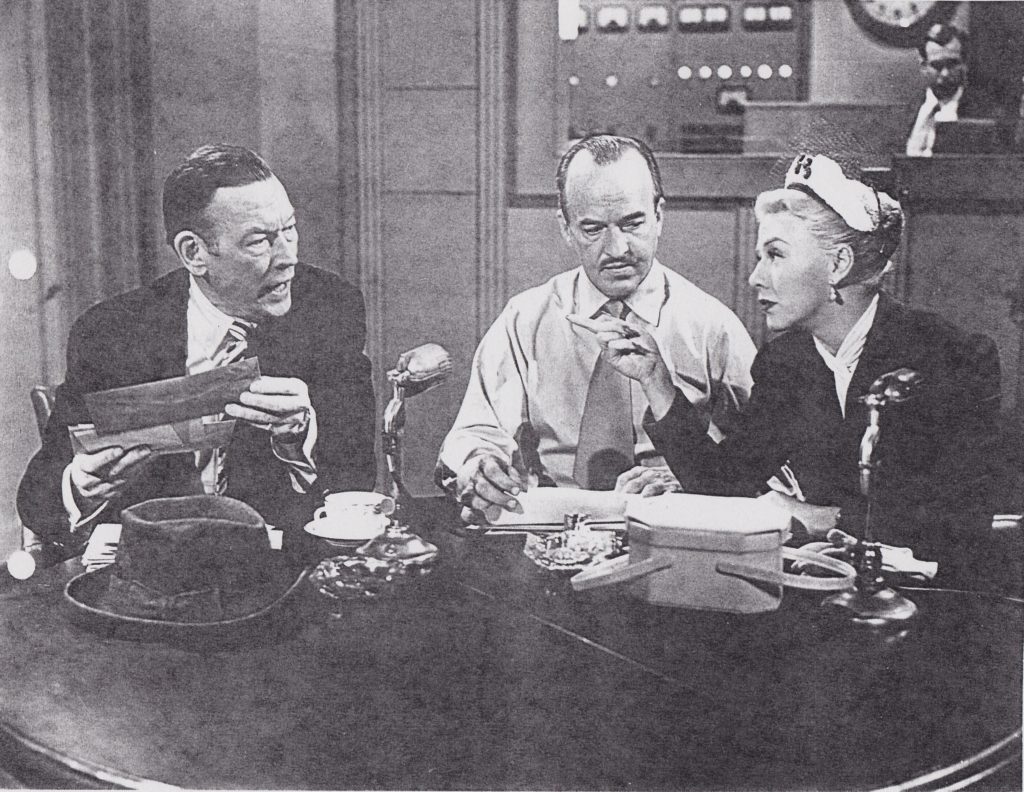
Buckley with Fred Allen and Ginger Rogers from “We’re Not Married” still, 1952. Author’s Collection.
By now he had fully developed the style he had been honing for 20 years, taking the persona of “His Lordship” both on-stage and off. At Lady Buckley’s urging, the four-way “Amos ‘n Andy” bit was de-emphasized in the act. In it’s place were the classic Lord Buckley raps, recasting incidents from history and mythology into a patois that blended scat-singing, black jive talk and the King’s English.
David Amram, the composer, musician and subterranean denizen once described Buckley’s contribution: “Lord Buckley was the consummate performer, having total command of his instrument, which was his voice and his ability to be all the various people that inhabited the world he created for his memorable performances. He was one of the first to combine Shakespeare, the Bible and the poetry of the streets. For many of us, he was the combination of Walt Whitman, Charlie Parker, Baudelaire and Laurence Olivier.
“Like Whitman, he was always lyric and grandiose. He reminded me of Charlie Parker as he created new stories out of thousands of unique patterns with spontaneous flights of fancy and one-time-only improvisations drawn from the moment. He seemed to relive Baudelaire’s spirit as a mad, burning, passionate poet,. always romantic and worldly, in spite of the overwhelming setbacks that would have destroyed almost anyone else. Like Olivier, he could create and become any number of unforgettable human beings and make you remember them forever. Lord Buckley was much more than his defined role as a comedian and entertainer. He was a visionary and a true American original who influenced a whole generation. All who heard him recognized him as an underground genius of spontaneous American poetry and humor. He captured the great joy and the great melancholy of the 1940s and 1950s.”
Lord Buckley’s odd alchemy often yielded such spectacular results as “The Nazz” (as in Nazarene), a hip retelling of the story of Christ and his disciples which, as in the following excerpt from the Sermon on the Mount section, reveals Buckley’s gift and power in all its raging glory:
“The Nazz is a-talkin’ and a-swingin’ with how pretty the flowers, how pretty the hours, how pretty me, how pretty you, how pretty he, how pretty she, how pretty the tree (Nazz had them pretty eyes. He wanted everybody to see trough his eyes so they could see how pretty it was). And they were havin’ such a wailin” gorgeous mardi gras time that before you know it these po’ cats is forty-two miles outta town, an ain’t nobody got the first biscuit.”
In addition to Christ in “The Nazz,” Buckley employed his distinctive and compelling brogue to celebrate Gandhi (“The Hip Ghan”), Spanish explorer Alvar Nunez Cabeza de Vaca (“The Gasser”), Edgar Allen Poe (“The Raven”), Albert Einstein (“The Hip Einie”), William Shakespeare (“Willie the Shake” and “Marc Antony’s Funeral Oration”), Abraham Lincoln (“Gettysburg Address”) and the Marquis de Sade (“The Bad Rapping…”).
When translated through the mind and tongue of Buckley, Shakespeare’s Julius Caesar resonates anew:
Hipsters, Flipsters and Finger Poppin’ Daddies,
Knock me your lobes!
I came here to lay Caesar out,
Not to hip you to him.
The bad jazz that a cat blows,
Wails long after he’s cut out.
The groovy is often stashed with their frames,
So don’t put Caesar down.
Buckley’s artifice was more than simple schtick. He infused his tales with a subtle point of view. As he said in his version of the Gettysburg address: “…that all Cats and Kitties, red, white or blue, are created level in front.”
“He was an artist who was like Jackson Pollock,” novelist Ken Kesey said recently. “He was splattering and making sense of those splatters. And all of us who were into that kind of art were quite taken by it…beyond Dada.”
Buckley moved his family around Southern California through the mid-50s, which included an extended stop in the Hollywood Hills, at an imposing Victorian mansion complete with a moat. He convinced a batty widow to allow him, his family and fluctuating flock to take up space in the place, which he promptly dubbed “The Castle.” As Hollywood hepcat-in-residence, his admirers included Frank Sinatra, Sammy Davis, Jr. and Robert Mitchum. These were the halcyon days of the royal court, where Buckley cooked up his great works.
Mel Welles, the California-based actor, director and writer was Buckley collaborator during this period. “The Royal Court was a very serious thing to him, throne and all. He had a throne in every house he ever had. a real throne, a magnificent chair. The Castle up on Whitley Terrace in Hollywood wasn’t really a castle. It was a nice house, a big house on top of a hill. “But what made it ‘The Castle’ was Buckley’s treatment of it.
“I wrote the ‘Gettysburg Address’ with him there. The night we wrote it, Benny Carter was over with a little combo and played ‘John Brown’s Body’ in the background. Buckley got so fluent with the idiom that he didn’t need to write anything. Like an instant translator at the United Nations, he could take any story and tell it in the hip and jazz idiom without any help. He could perform magic. As a storyteller he was incomparable. Still, to this day, there’s nobody as dynamic.
“He was the original person who crossed all the lines without any bias. Nobody influenced him. No performer anyway. Abe Lincoln influenced him. Black musicians influenced him. I know of nobody with a keener perception of the black experience than him, and I mean that sincerely. I know of nobody, black or white, that had a greater love for the black experience in its entirety, in its ugliness and in its beauty. And nobody understood the black amongst white better than Dick Buckley.”
Despite the blossoming of his repertoire and performances, Buckley continued to be regarded as an entertainment curiosity and was primarily relegated to performing in the gritty world of jazz clubs and strip joints. In addition, his ever-present entourage hampered Buckley’s ability to regulate the cash flow necessary for the smooth operation of a domestic household. In 1957 he relocated his family to Las Vegas, where he was able to obtain fairly steady bookings in the casinos and clubs.
In 1960, the Buckleys were again on the move, this time to Marin County, attracted by the Bay Area’s artistic community and mellow subcultures. Joints like the Purple Onion and the Hungry I were all the rage, headlining tip-flight jazz acts and performers like Lenny Bruce, Mort Saul, Dick Gregory and promptly, Lord Buckley. but soon after settling in San Rafael, His Lordship set off with one of his minions in the summer of 1960 on what he dubbed his “Cosmic Tour”„a cross-country whistle-stop road trip in a red VW minibus.
By autumn Buckley was holding court at the Jazz Gallery in New York’s Greenwich Village when he was warmly received by the city’s entertainment press. but, for reasons that to this day remain shrouded, things soured for the 54-year-old entertainer. In late October Buckley was dragged from the stage of the Jazz Gallery by the New York vice squad because of an alleged cabaret card violation.
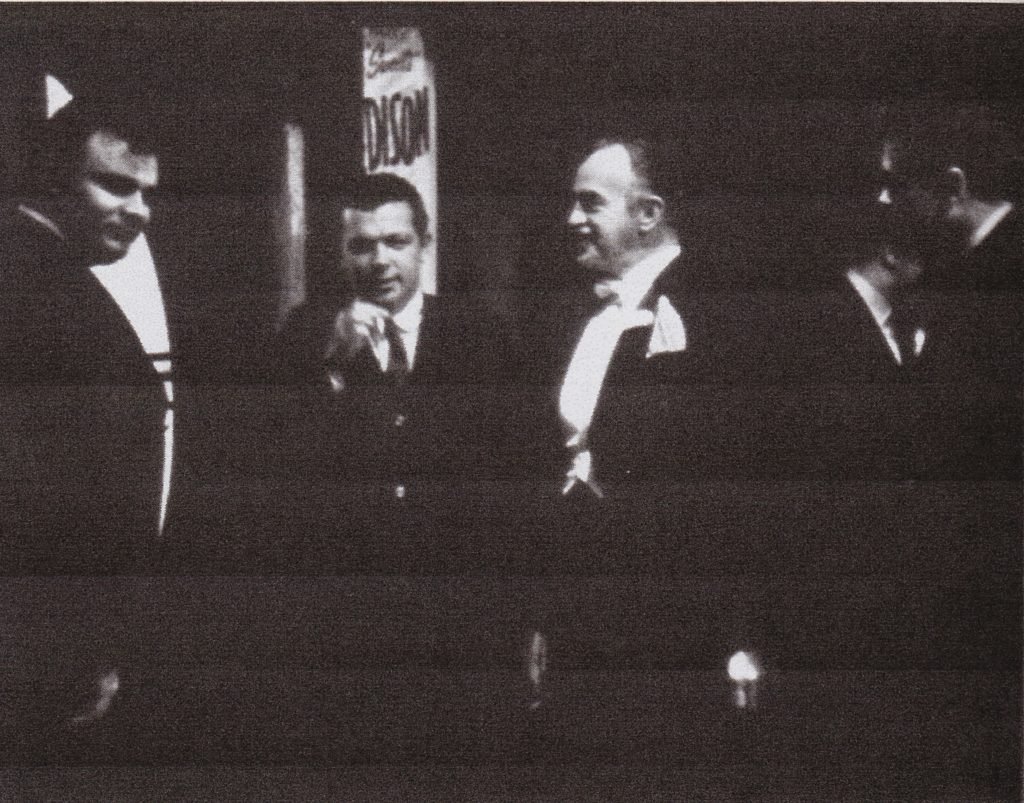
Buckley with Joe Termini, H.L. “Doc” Humes and Prince Lewis Foremaster. Jazz Gallery NYC, 1960. Photo: Bob Parent
The cabaret card law, an antiquated statue dating back to the Prohibition days, prevented not only performers but all restaurant and club employees from securing employment if they had a police record. Buckley had bee busted for public drunkenness 19 years earlier in Reno, and this was used as the excuse to confiscate his cabaret card and shut down his show.
Jazz chanteuse and Buckley cronie Millie Vernon chillingly remembers the cabaret card days when the police required finger prints before a license would be issued. “Sinatra didn’t play a New York nightclub again until the cabaret card law was finished. Lady Day couldn’t play in New York. Monk, Bird…it was disgraceful. We went down to get fingerprinted for our cabaret cards once and Art Blakey was sitting down there at the police station. What an indignity. It was terrible!”
Buckley’s cause was championed by the hastily-organized Citizen’s Emergency Committee, a loose-knit group comprised of many of the city’s literary, musical and social intelligentsia.
Writer and Paris Review publisher George Plimpton remembers that what “was so remarkable about the Citizen’s Emergency Committee was that it was this high-powered group of people. Everybody was in it. It was quite an eclectic conglomeration. the committee did succeed in bringing the cabaret card issue before the public. Eventually the licensing requirements ceded. It was, by edict, eventually done away with.”
Counting on Buckley to testify, the Citizen’s Emergency Committee forced the issue, garnering front page headlines and an official investigation of the cabaret card bureau’s questionable modus operandi. The group charged that the cabaret licensing bureau had deteriorated into an institutionalized shakedown operation conducted by a shadowy wing of the NYPD.
Concurrently, certain quarters of the black community were said to be disturbed by Buckley’s presentations, which they regarded as outdated at the very least.
Tired, unemployed and caught between two opposite but powerful camps, His Lordship’s health failed and on November 12, 1960 he died of what was officially reported as heart failure.
When Larry Storch heard the news he was predictably shocked.
“You know, we never really thought Lord Buckley would die. We thought he had it from his mouth to God’s ear.”
Several weeks later many of Buckley’s friends and admirers mourned his passing with a memorial service to benefit the Buckley family at the Village Gate. Eulogies were given, reminiscences made, and glasses raised as Dizzy Gillespie and Ornette Coleman blew a cosmic blues deep into the night.
Thirty years later the Santa Barbara hills were rocking with that ethos, fueled by a performance palette that included poets, local comics, jugglers, anti-war and environmental groups, a hip rabbi, a presentation by researchers from the Albert Hoffman Institute and bands displaying their folk, blues, rock and jazz licks.
Among the assembled were the guests of honor, the Royal Family: Buckley’s widow, Lady Elizabeth and her two children Richard Buckley, Jr. and Laurie. Also present were Laurie’s two children and Frederick Buckley, Lord Buckley’s son by a previous marriage. At various points through the happening they spoke of Lord Buckley or performed works inspired by his legacy.
Most notable was Lady Buckley’s demonstration of the personal choreography she developed during the reign of the Royal Court. “Ballet for Living” is a blend of bebop and Ballanchine which draws together the traditions of Western dance forms with a Swing Era sensibility. Displaying her steps on stage during the festival, Lady Buckley resembled a medieval squire or a wood spirte from A Midsummer Night’s Dream. As she floated across the stage all present felt they were members in good standing of the Royal Court and somewhere above the dusty hills in the rich blue sky, Lord Buckley was smiling.
For More on Lord Buckley:
LordBuckley.com
http://lordbuckley.com/home-new/lbc-welcome.html
Wikipedia
https://en.wikipedia.org/wiki/Lord_Buckley
LA Magazine
Air Brush Museum
http://www.airbrushmuseum.com/wig_bubbles.htm
Super Weird Substance
Voices of East Anglia
Head Heritage
https://www.headheritage.co.uk/unsung/albumofthemonth/lord-buckley-in-concert
Very Important Potheads
https://www.veryimportantpotheads.com/lordbuckley.html
The Eichler Network
https://www.eichlernetwork.com/article/his-royal-hipness?page=0,0
Ian Anderson
https://www.ianaanderson.com/lord-buckley/
Ralph
https://ralphmag.squarespace.com/blog/2018/7/5/lord-buckley
International Times
The Allen Ginsberg Project
http://ginsbergblog.blogspot.com/2015/11/lord-buckley.html
Please Kill Me—What’s Cool
https://pleasekillme.com/jack-kerouac-found-groove/
https://pleasekillme.com/jack-kerouac-slim-gaillard-lord-buckley/
Holland Tunnel Drive
http://hollandtunneldive.blogspot.com/2017/04/his-royal-hipness.html
NUVO
